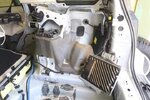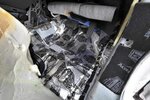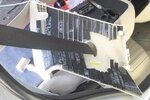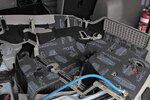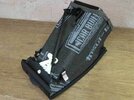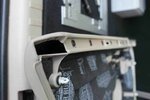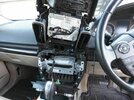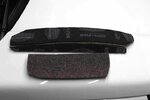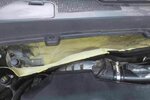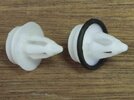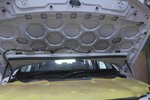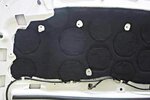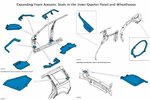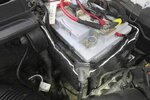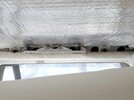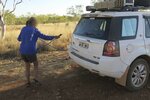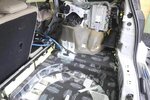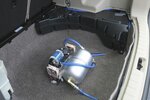Outbacknomad
Active Member
- Joined
- Apr 7, 2021
- Messages
- 202
- Reaction score
- 137
- Location
- Sydney
- Country
- Australia
- Dash Cam
- 4 x Garmin 56 plus 100Ah auxiliary battery
I have a pretty quiet car. But Australia's outback corrugated roads grind you down. Also AT tyres are a lot more noisy than road tyres.
I have used products from a few manufacturers, basically what was easiest to get. Money was not an issue as my time was worth far more than the materials.
Firstly get some panel trim removing tools, you do not need them often but they are very handy at times. A roller for butyl acoustic insulation. Buy spare trim panel clips. Some panels on my car they break every time you remove the panel.
Save some big pieces of backing sheet, comes in handy to double up to push foam into difficult areas & then peel back.
See if you can download a workshop manual for your car, very handy at times, especially getting into the dashboard.
Start with a small area, ie, a door panel. Once you have done 2 or so doors you will be more confident doing larger areas.
All up I have spent about 3 weeks of actual work but over about a year. I just kept doing more and more, mostly just to see how far I could reduce noise.
The floor on my car is extremely well insulated so the few things I did there didn't do a lot to reduce noise further.
The ceiling I only used 10mm foam originally and no butyl, but later added another 25mm thick engine bay foam. I was very surprised how much this deadened the car. Up to 45mm thickness in places simply to fill the ceiling cavity.
Doors, I started with 10mm but later stuffed them full of foam, this is a lot better, especially from the tyre noise in my case.
I have done the fire wall both sides, some really thick blocks where I could, this worked well. Lined the bonnet with expensive liner, actually 2 lots and butyl on the metal spaces of the bonnet panel.
Rear third of ceiling, later added another 25mm, there is another 10mm on the ceiling lining.
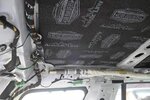
Easier to line door trim panel. Later I filled as much of the volume as possible.
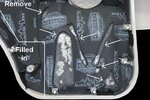
Butyl and foam to quieten down mirror motors.

Filled the back of A, B, C & D column trim panels.

Column A trim panel, carful to split the foam across the airbag trim split line.
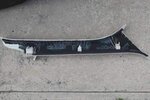
A 50mm thick block on the firewall. Steering column in foreground.
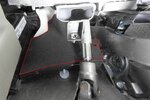
Further 25mm engine bay foam added to ceiling. This surprised me how much it decades the car. But it is the biggest panel. Up to 45mm thick in places so an acoustic "base trap". Also polyester ceiling batts, but thinner, for thermal insulation.
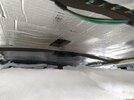
The car has sort of 2 firewalls, so filled everywhere I could.

Tailgate trim panel, easier to line the trim panel. Also stuck foam in the window surrounds.

Door window trim surrounds, a bit of foam in there.
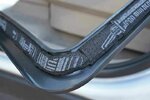
I also have some old pyramid foam which I stuffed into tight spaces as it was more flexible.
Don't go overboard with butyl. I used 2 boxes, that was enough, but used stacks of foam, vastly more than I first used. I got a bit of 3 & 6mm foam which was useful in thin places. If I had the 25mm foam earlier I would have used that a bit more instead of layering up 10mm foam.
Used some mass load vinyl under the floor mats, in my car due to the good floor insulation probably not really worthwhile.
At the end of the day, a bit of butyl, but foam, foam, foam & foam as thick as you can.
I have used products from a few manufacturers, basically what was easiest to get. Money was not an issue as my time was worth far more than the materials.
Firstly get some panel trim removing tools, you do not need them often but they are very handy at times. A roller for butyl acoustic insulation. Buy spare trim panel clips. Some panels on my car they break every time you remove the panel.
Save some big pieces of backing sheet, comes in handy to double up to push foam into difficult areas & then peel back.
See if you can download a workshop manual for your car, very handy at times, especially getting into the dashboard.
Start with a small area, ie, a door panel. Once you have done 2 or so doors you will be more confident doing larger areas.
All up I have spent about 3 weeks of actual work but over about a year. I just kept doing more and more, mostly just to see how far I could reduce noise.
The floor on my car is extremely well insulated so the few things I did there didn't do a lot to reduce noise further.
The ceiling I only used 10mm foam originally and no butyl, but later added another 25mm thick engine bay foam. I was very surprised how much this deadened the car. Up to 45mm thickness in places simply to fill the ceiling cavity.
Doors, I started with 10mm but later stuffed them full of foam, this is a lot better, especially from the tyre noise in my case.
I have done the fire wall both sides, some really thick blocks where I could, this worked well. Lined the bonnet with expensive liner, actually 2 lots and butyl on the metal spaces of the bonnet panel.
Rear third of ceiling, later added another 25mm, there is another 10mm on the ceiling lining.

Easier to line door trim panel. Later I filled as much of the volume as possible.

Butyl and foam to quieten down mirror motors.

Filled the back of A, B, C & D column trim panels.

Column A trim panel, carful to split the foam across the airbag trim split line.

A 50mm thick block on the firewall. Steering column in foreground.

Further 25mm engine bay foam added to ceiling. This surprised me how much it decades the car. But it is the biggest panel. Up to 45mm thick in places so an acoustic "base trap". Also polyester ceiling batts, but thinner, for thermal insulation.

The car has sort of 2 firewalls, so filled everywhere I could.

Tailgate trim panel, easier to line the trim panel. Also stuck foam in the window surrounds.

Door window trim surrounds, a bit of foam in there.

I also have some old pyramid foam which I stuffed into tight spaces as it was more flexible.
Don't go overboard with butyl. I used 2 boxes, that was enough, but used stacks of foam, vastly more than I first used. I got a bit of 3 & 6mm foam which was useful in thin places. If I had the 25mm foam earlier I would have used that a bit more instead of layering up 10mm foam.
Used some mass load vinyl under the floor mats, in my car due to the good floor insulation probably not really worthwhile.
At the end of the day, a bit of butyl, but foam, foam, foam & foam as thick as you can.

